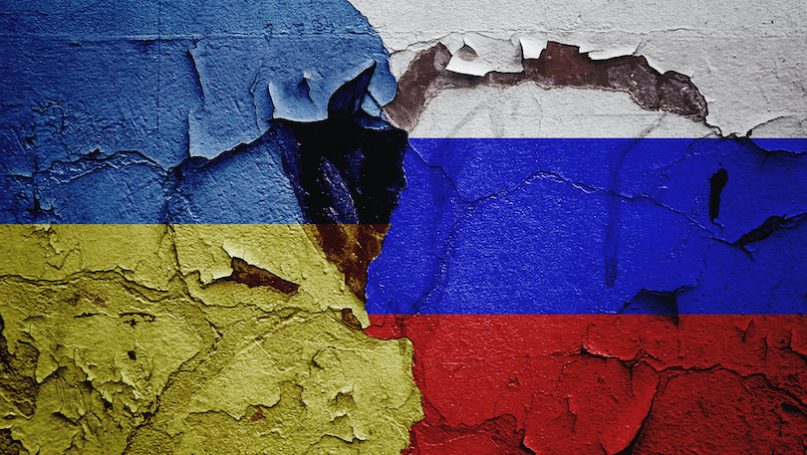
Understanding the Russia-Ukraine Conflict: Historical Context and Current Developments
Share
Introduction
The Russia-Ukraine conflict has become one of the most significant geopolitical crises of the 21st century, drawing attention from governments, analysts, and citizens around the globe. Its roots extend deep into history, and its implications resonate beyond the borders of Ukraine and Russia. This article seeks to provide a comprehensive understanding of the conflict by examining its historical foundations, the evolution of relations between the two nations, and the current developments that continue to shape the situation.
Historical Context
To understand the current dynamics of the Russia-Ukraine conflict, it is essential to explore the historical context that has laid the groundwork for present tensions. This history is marked by centuries of intertwined destinies, cultural exchanges, and political upheaval.
The Soviet Era
From 1922 to 1991, Ukraine was part of the Soviet Union, a period characterized by significant Russification policies. The Soviet regime suppressed Ukrainian language and culture, promoting Russian as the dominant language in governance and education. Key events during this era include:
- The Holodomor (1932-1933): A man-made famine that resulted in the deaths of millions of Ukrainians, the Holodomor is considered one of the most devastating events in Ukrainian history. Many view it as an act of genocide against the Ukrainian people.
- World War II: Ukraine was a major battleground during the war, suffering immense casualties. Post-war, the Soviet government further tightened its grip on Ukrainian society.
Independence and Early Challenges
With the collapse of the Soviet Union in 1991, Ukraine declared independence, marking the beginning of a new era. However, the transition to independence was fraught with challenges:
- Political Instability: The early years of independence were marked by political turmoil, corruption, and economic struggles as Ukraine attempted to establish a stable government and market economy.
- Language and Identity Issues: The division between Ukrainian speakers and Russian speakers created societal rifts, affecting national identity and political alignment.
The Orange Revolution (2004-2005)
The Orange Revolution was a pivotal moment in Ukraine's political history. Triggered by widespread allegations of electoral fraud in the 2004 presidential elections, it highlighted the deep divisions within the country regarding its orientation:
- Western Orientation vs. Russian Influence: The pro-Western candidate, Viktor Yushchenko, faced off against the pro-Russian candidate, Viktor Yanukovych. The public's demand for democratic reforms and transparency led to mass protests that ultimately overturned the fraudulent election results.
- Impact on Russia-Ukraine Relations: The revolution strained relations with Russia, as the latter viewed the Western-leaning government as a threat to its influence in the region.
Euromaidan Protests (2013-2014)
The Euromaidan protests marked another critical juncture in Ukraine's history, highlighting the nation's struggle between East and West:
- Suspension of EU Agreement: In November 2013, President Yanukovych suspended an association agreement with the European Union in favor of closer ties with Russia, sparking widespread protests.
- Escalation of Protests: What began as a call for EU integration quickly evolved into a broader movement against government corruption and authoritarianism, leading to Yanukovych's ousting in February 2014.
The 2014 Annexation of Crimea
The situation escalated dramatically in 2014 when Russia annexed Crimea, a move that was met with international condemnation and marked a significant turning point in the conflict:
- Military Intervention: Following Yanukovych's ousting, Russian troops occupied Crimea, leading to a controversial referendum in which the majority of voters allegedly chose to join Russia. The legitimacy of this referendum has been widely disputed.
- International Response: The annexation prompted a swift response from the West, resulting in economic sanctions against Russia and diplomatic isolation.
Conflict in Eastern Ukraine
The annexation of Crimea was followed by unrest in Eastern Ukraine, leading to a pro-Russian insurgency in the Donbas region. This conflict has deepened the humanitarian crisis and further complicated the situation:
- Pro-Russian Separatists: Armed groups in Donetsk and Luhansk declared independence from Ukraine, leading to a violent conflict with Ukrainian forces.
- Humanitarian Impact: The ongoing fighting has resulted in thousands of deaths, with millions displaced and in need of humanitarian assistance.
International Implications
The Russia-Ukraine conflict has far-reaching implications for international relations and security:
- NATO and EU Response: The conflict has led to a reevaluation of security strategies in Europe. NATO has increased its presence in Eastern Europe, while the EU has provided significant financial and military support to Ukraine.
- Global Security Landscape: The crisis has reignited discussions around security in Europe and the role of international organizations in conflict resolution.
Recent Developments
As of 2023, the situation in Ukraine remains fluid, with ongoing military engagements and diplomatic efforts continuing:
- Continued Fighting: Despite multiple ceasefires and peace agreements, skirmishes and battles continue in the Donbas region, with both sides accusing each other of violations.
- Economic Challenges: Ukraine faces significant economic challenges as it seeks to rebuild and modernize its infrastructure amidst the ongoing conflict.
- International Support: Global support for Ukraine remains robust, with many countries pledging military aid and economic assistance to bolster its defense capabilities.
Conclusion
The Russia-Ukraine conflict is a multifaceted crisis rooted in a complex historical narrative. Understanding this conflict requires recognition of the deep-seated issues that have shaped relations between the two nations. As the situation continues to evolve, it remains crucial for the international community to engage in dialogue and seek peaceful resolutions that respect Ukraine's sovereignty while addressing the underlying tensions that have fueled this ongoing conflict.
